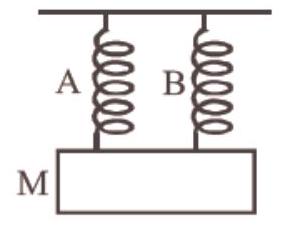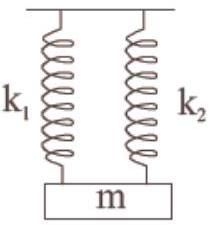Oscillations - Result Question 48
52. A body of mass M, executes vertical SHM with periods
[2002]

(a)
(b)
(c)
(d)
Show Answer
Answer:
Correct Answer: 52. (d)
Solution:
- (d) The time period of spring mass system,


When springs are connected in parallel then
So,
from (i),
from (ii),
from (iii),
from above expressions,
Here the springs are joined in parallel. So
where
or,






